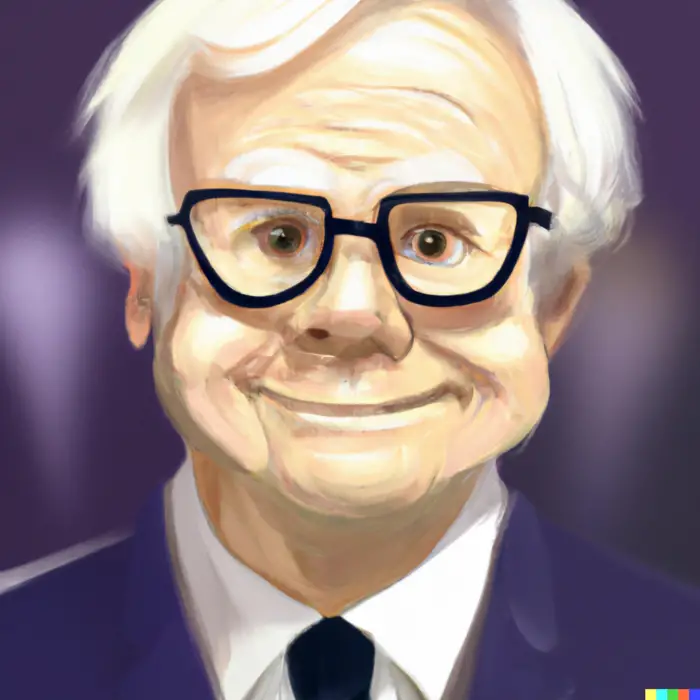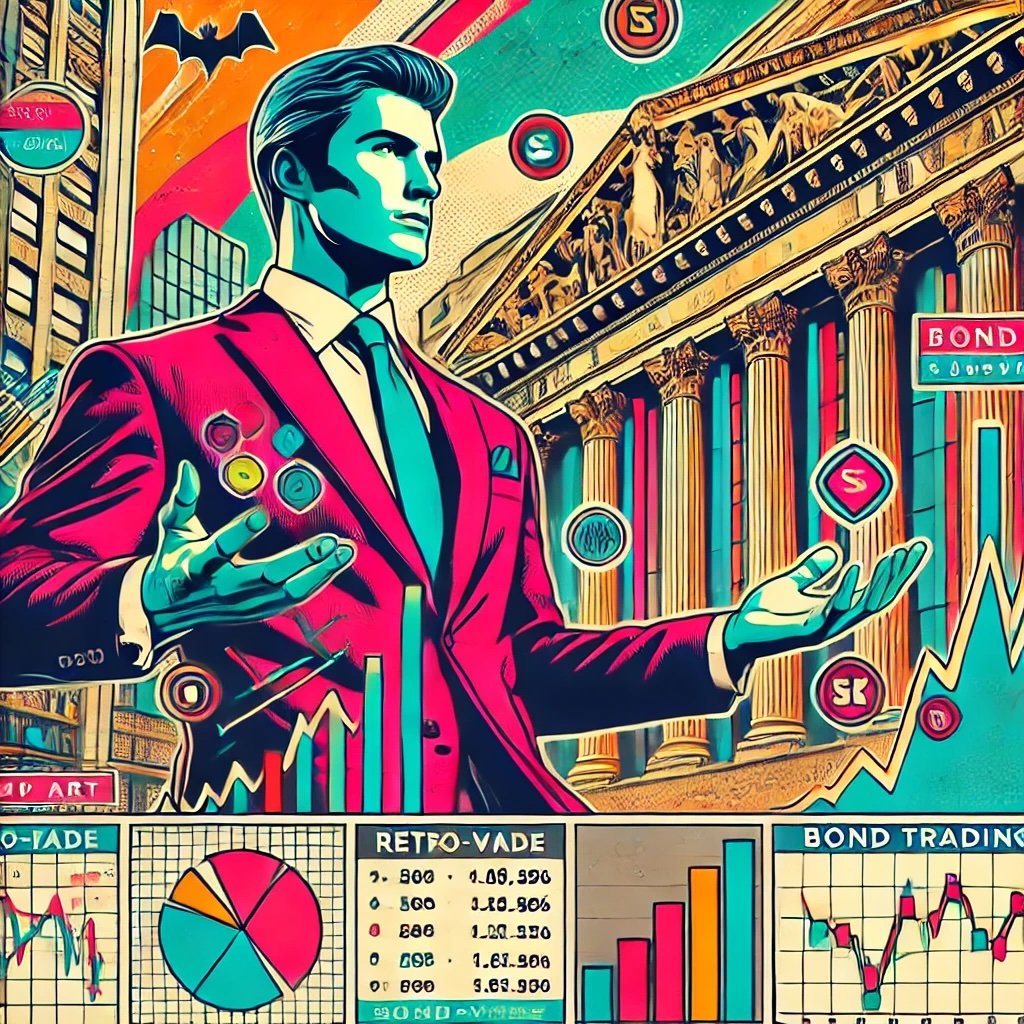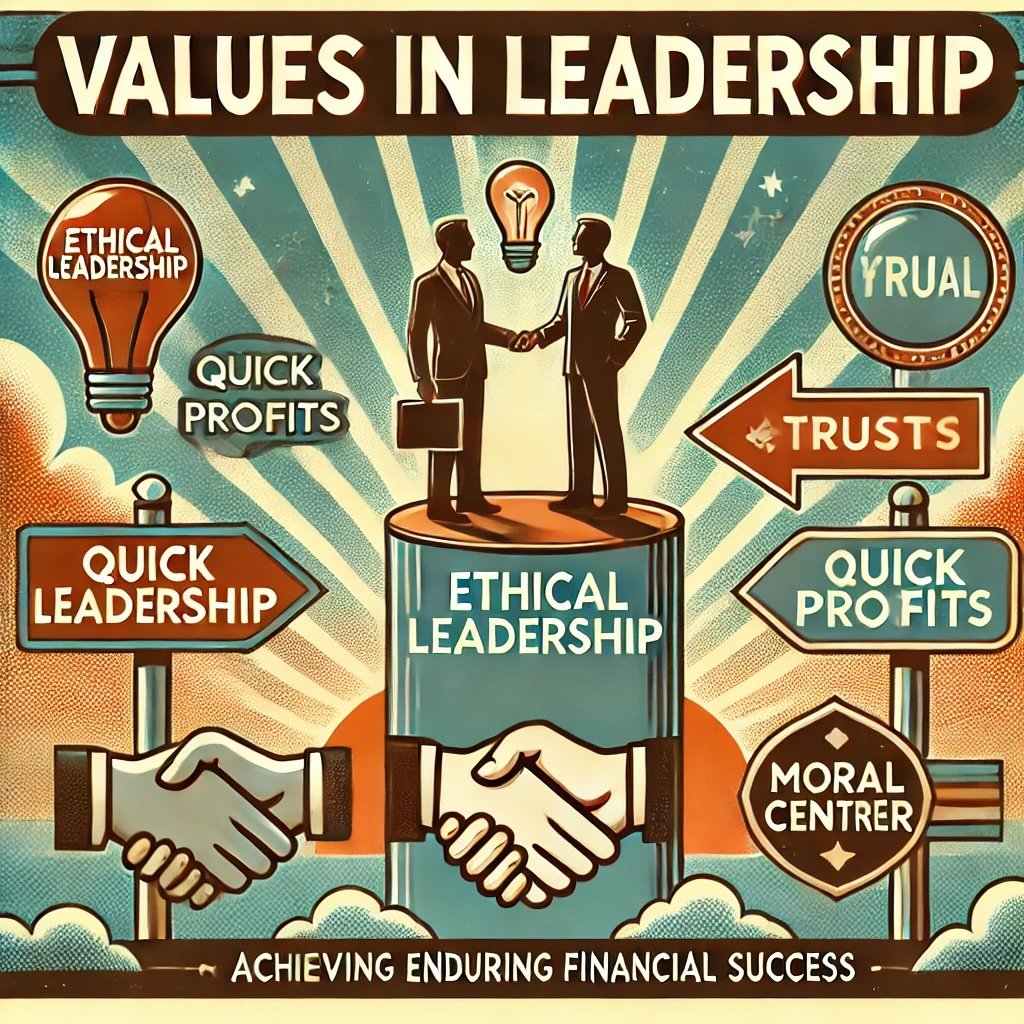There are some names in the world of finance and investment that are synonymous with success, and perhaps none are more celebrated than that of Warren Edward Buffett. Born in 1930 in Omaha, Nebraska, Buffett showed an uncanny knack for business and numbers from an early age. The son of a stockbroker-turned-Congressman, Buffett purchased his first stock at the age of 11 and by 13, he was running his own businesses. Today, he is revered as the “Oracle of Omaha” – a billionaire investor, business tycoon, and philanthropist whose words and actions are followed by millions around the world. As the chairman and CEO of Berkshire Hathaway, he is considered one of the most successful investors of all time, demonstrating an astute ability to pick companies that grow exponentially over the years.

Overview of Buffett’s Investment Style
Warren Buffett’s investment philosophy is a melting pot of patience, keen analytical acumen, and a good-old-fashioned adherence to fundamental business principles. He has been a consistent advocate of ‘value investing’, an investment paradigm he mastered under the guidance of his mentor, Benjamin Graham. It’s about finding and investing in businesses that are undervalued by the market – those hidden gems that aren’t fully appreciated by others.
Buffett isn’t interested in short-term price fluctuations or chasing after the latest stock market trends. He cares deeply about understanding the underlying business – its management, its competitive advantage, its financial health, and its potential to generate profit over the long term. In essence, Buffett’s approach is grounded in the belief that if you buy shares in a company, you are buying a piece of the business itself, not just a ticker symbol or a piece of paper.
He also preaches the virtue of patience in investing. For Buffett, time is a friend of a wonderful business. He is willing to wait, sometimes for years, for his investments to pay off. His favourite holding period? “Forever,” he has often said.

Favourite Holding Period Is Forever
Moreover, Buffett is also known for his “economic moat” investment strategy. This involves investing in businesses that have a unique advantage or barrier that sets them apart from their competitors – a moat that protects them from competition and allows them to maintain profitability.
While others get swept away by the winds of market sentiment, Warren Buffett remains steadfast, with his feet firmly planted on the ground, analyzing annual reports, and making informed decisions. His extraordinary success can serve as a masterclass in investment for anyone looking to understand the art of building wealth over time.
In the end, Buffett’s charm and charisma are just as compelling as his financial prowess. His folksy wisdom and witty one-liners, delivered in his annual letters to shareholders or at Berkshire Hathaway’s annual meetings, have won him a legion of admirers. Yet, at the heart of his appeal is a simple truth: Warren Buffett, the humble boy from Omaha, has shown the world the power of steady, disciplined investing.

Buffett’s Investment Philosophy
At the heart of Warren Buffett’s investment philosophy is a simple, yet powerful concept: value investing.
Value Investing
This approach, primarily taught to him by his mentor Benjamin Graham, is about buying securities that appear underpriced by some form of fundamental analysis. Buffett was captivated by Graham’s seminal work, “The Intelligent Investor,” in which he stressed the importance of buying businesses for less than their intrinsic value.
To Buffett, the essence of value investing lies in the rigorous analysis of a company’s fundamentals, including its earnings, assets, debts, and overall market conditions. Unlike speculative investors who focus on stocks that they believe the market will soon find attractive, Buffett applies a more objective and calculative approach. He’s searching for “dollar bills for 50 cents,” often referring to these as his “cigar butts”. Once found, he capitalizes on the opportunity, confident in the idea that the market will eventually recognize the true value of these undervalued companies.

Long-term Investment Strategy
Buffett’s philosophy is also characterized by an unwavering commitment to the long haul. He is often quoted saying, “If you aren’t willing to own a stock for ten years, don’t even think about owning it for ten minutes.” This epitomizes his dedication to long-term investing.
His rationale behind this is two-fold. First, he believes that the real value of a business manifests over time. Good businesses grow and become more valuable over the years, and patient investors are rewarded. Second, he understands the power of compounding – what Albert Einstein famously referred to as the “eighth wonder of the world.”
It is a testament to this philosophy that many of Buffett’s most successful investments, such as Coca-Cola and American Express, have been held for decades. In fact, he often jokes that his preferred holding period is “forever”. He’s not swayed by market hype or panic; instead, he remains steadfast in his convictions, often going against the tide, buying when others are fearful, and holding when others are greedy.

Belief in Self-education
Finally, a cornerstone of Buffett’s investment philosophy – and a major factor behind his success – is his belief in the power of self-education. He is a voracious reader, often spending up to 80% of his day reading annual reports, financial news, and a wide variety of books.
Buffett believes that continuous learning is crucial in the ever-changing world of investing. The market is dynamic, with new industries emerging and old ones declining. He stresses that to stay ahead, an investor must be in a constant state of learning and adaptation.
Moreover, his emphasis on understanding the businesses he invests in means he needs to learn about various industries and how they operate. This isn’t superficial knowledge, but a deep understanding that allows him to assess a company’s potential accurately.
Buffett’s commitment to self-education extends beyond his professional life. He has often shared wisdom about life, success, and money, imparting lessons he has learned from his personal experiences and observations. This has not only made him a remarkable investor but also a mentor for those seeking guidance in their investment journey.
Warren Buffett’s investment philosophy, in essence, is a blend of intellectual rigor, patience, discipline, and an insatiable curiosity. These principles guide his investment decisions and have been instrumental in his extraordinary success. They also offer invaluable lessons for any investor looking to navigate the complex world of investing.
source: Evan Carmichael on YouTube
Major Investment Hits
Here are some of Warren Buffett’s great investing hits!
source: The Long-Term Investor on YouTube
The Coca-Cola Company

Overview of the Investment
One of the most iconic investments Warren Buffett has ever made is in The Coca-Cola Company. In 1988, Buffett’s Berkshire Hathaway started buying the company’s shares, eventually spending about $1.02 billion to acquire a 6.2% stake in the global beverage giant. The decision to invest in Coca-Cola wasn’t just a stroke of genius, but also an emblem of Buffett’s investment style: buying shares in great businesses when they’re undervalued and holding onto them for a long time.
Reasons for Investing
The main reason for Buffett’s investment in Coca-Cola lies in the enduring nature of its brand and its global reach. Coca-Cola has one of the most recognized brands in the world, and Buffett often emphasizes the power of brand recognition in business success.
In addition, Buffett was drawn to Coca-Cola because he saw it as an undervalued company. The stock market crash of 1987 had affected many companies’ share prices, including Coca-Cola’s. Yet, the intrinsic value of the company — its brand, its global distribution network, and its potential for growth — remained strong. Buffett saw this as an opportunity to invest.
Another reason was the company’s business model. Buffett has often stated that he likes businesses that are “simple and understandable.” Coca-Cola’s business model of selling syrup to bottling companies who then distribute the final product globally is uncomplicated and efficient.
Outcome and Impact on Berkshire Hathaway’s Portfolio
The Coca-Cola investment has paid off handsomely for Berkshire Hathaway. Berkshire still holds the Coca-Cola shares, and the investment has grown substantially. Coca-Cola’s consistent dividend payments have also contributed to Berkshire Hathaway’s cash flow.
But beyond the financial returns, the Coca-Cola investment has had a profound impact on Berkshire Hathaway and Buffett’s investment legacy. It has become a prime example of Buffett’s value investing strategy and his ability to identify great businesses. The success of this investment has further solidified Buffett’s reputation as one of the greatest investors of all time, with his simple yet powerful approach of buying wonderful businesses at fair prices and holding onto them for the long haul.
source: Yahoo Finance on YouTube
B. Apple Inc.
Overview of the Investment
A notable addition to Warren Buffett’s pantheon of successful investments is Apple Inc., a company he began investing in relatively late, considering his long investment career. The move into Apple’s shares marked a deviation from his traditional investment preferences, as Buffett was known for avoiding technology companies, citing a lack of understanding of their business models.
But, in 2016, Berkshire Hathaway took a bite out of the Apple, initially purchasing 9.8 million shares for approximately $1 billion. This move surprised many, considering Buffett’s previous reticence towards tech stocks. However, this surprise turned to astonishment as Buffett continued to ramp up his stake in the tech giant, with Berkshire Hathaway’s holdings swelling to a peak of approximately 245 million shares in 2018.
Reasons for Investing
Despite Apple being a technology company, Buffett’s decision to invest wasn’t based on its technological prowess, but rather its strong brand and ecosystem. He viewed Apple more as a consumer company, noting that consumers love their Apple products and are embedded in the ecosystem, making them more likely to continue buying Apple products in the future.
Moreover, Apple’s robust cash generation ability was another significant factor. The company’s enormous profits, combined with a fortress-like balance sheet, made it an attractive investment. In essence, Buffett saw Apple as a valuable company with an entrenched consumer base and reliable revenue streams.
It’s also worth noting that the decision to invest in Apple was influenced by Berkshire’s two other investment managers, Todd Combs and Ted Weschler. They helped Buffett understand and appreciate Apple’s unique business model and its potential.
Outcome and Impact on Berkshire Hathaway’s Portfolio
The Apple investment has become one of Buffett’s most successful bets. Apple represented the largest holding in Berkshire Hathaway’s portfolio, accounting for more than 40% of its total value.
Not only has the value of the Apple shares increased significantly since Berkshire’s initial investment, but Apple has also returned a substantial amount of cash to Berkshire through dividends.
This investment has shown that Buffett, though often seen as an adherent to traditional industries, can step out of his comfort zone and still succeed. It also underscores the importance of understanding the business, not just the industry, in making investment decisions. Investing in Apple, a technology company, highlighted Buffett’s adaptability and confirmed that his principles of investing in strong businesses with sustainable competitive advantages apply to all industries, not just the ones he has traditionally favored.
Ultimately, the success of Berkshire’s investment in Apple underscores the timeless nature of Buffett’s investment philosophy: identifying undervalued companies with robust business models and a loyal customer base, and sticking with them for the long haul.
source: The Long-Term Investor on YouTube

American Express
Overview of the Investment
Another standout name in Warren Buffett’s investment portfolio is American Express. Buffett’s association with the company dates back to the 1960s when he first invested in the company following the infamous “Salad Oil Scandal.” This event had severely impacted American Express’s reputation and stock price, presenting an attractive buying opportunity for the value-investing maestro. Buffett’s firm, then Buffett Partnership Ltd., bought a 5% stake in American Express in 1964, paying $20 million.
Reasons for Investing
The decision to invest in American Express was underpinned by several factors that are characteristic of Buffett’s investment philosophy. Despite the Salad Oil Scandal, Buffett saw that the core business of American Express, which involved charge cards, traveler’s cheques, and related businesses, remained robust. He understood that although the scandal was a temporary setback, it didn’t alter the overall value of the company.
Another crucial factor was the strength of American Express’s brand and its customer loyalty. Buffett knew that people around the world still trusted American Express for its financial and travel-related services. He observed that despite the scandal, cardholders did not abandon the company and new customers continued to apply for the card, which signified to him the enduring power of the brand.
Buffett’s decision to invest was also influenced by his belief in the long-term profitability and growth potential of the credit card industry, which was in its infancy during the 1960s. He believed that as the economy grew and more people began to use credit, companies like American Express would thrive.
Outcome and Impact on Berkshire Hathaway’s Portfolio
The American Express investment has proven to be a highly successful one for Buffett. Berkshire Hathaway which represented one of the largest positions in its portfolio.
Apart from the substantial appreciation in share price, American Express has also regularly returned cash to Berkshire through dividends, adding to the overall gains from this investment.
But the American Express investment means more than just financial returns to Buffett. It is a shining example of his investment approach: finding undervalued companies with strong brand names and a loyal customer base, and sticking with them through thick and thin. Despite the initial scandal and various economic downturns over the decades, Buffett never lost faith in American Express. His patience and long-term perspective have paid off, solidifying his reputation as an extraordinary investor and demonstrating the power of value investing.
source: Business Hub on YouTube

Geico
- Overview of the Investment
The story of Warren Buffett’s investment in Geico, short for the Government Employees Insurance Company, dates back to when he was just a young man, a student of Benjamin Graham at Columbia University. It was Graham who introduced Buffett to Geico, where Graham was the chairman. The seeds of the investment were sown then, but it wasn’t until 1976 that Buffett, through Berkshire Hathaway, began to invest in Geico, buying a significant stake when the company was on the brink of bankruptcy. Fast forward to 1996, and Berkshire Hathaway purchased the remaining shares of Geico, making it a wholly-owned subsidiary.
- Reasons for Investing
Buffett’s investment in Geico was driven by several factors. First and foremost, he was deeply familiar with the company’s business model, having been introduced to it by his mentor, Benjamin Graham. He understood the value of Geico’s direct selling insurance model, which gave it a cost advantage over other insurers who sold through agents. This unique business model, Buffett believed, gave Geico a competitive edge.
Additionally, despite its financial troubles in the 1970s, Buffett saw that Geico had a strong brand and a loyal customer base, two characteristics he values highly in any business. He recognized that Geico’s financial troubles were due to poor underwriting decisions and overly aggressive expansion, and not because of inherent problems with the business model or the brand.
Lastly, Buffett saw the intrinsic value in Geico’s business, which he believed the market was undervaluing due to its current financial difficulties. This kind of situation – a good business temporarily in trouble – is an ideal scenario for value investors like Buffett.
- Outcome and Impact on Berkshire Hathaway’s Portfolio
The acquisition of Geico has been immensely successful for Berkshire Hathaway. Geico is one of the largest auto insurers in the United States. It has consistently contributed a significant portion of earnings to Berkshire Hathaway, and its low-cost business model has enabled it to grow its market share over the years.
Moreover, the success of Geico has provided Berkshire Hathaway with a stable cash flow, which has been used to finance other investments and acquisitions. Buffett often refers to such businesses as his “cash cows.”
The Geico investment showcases the core of Buffett’s investment philosophy. He saw past the temporary difficulties the company was experiencing and recognized the long-term value of the business. This investment story emphasizes Buffett’s key principles: understand the business, recognize the value of a strong brand and customer loyalty, and have the courage to invest when others are fearful. It’s these principles that have guided Buffett throughout his investment career and helped him amass an extraordinary track record.

Other Noteworthy Successes
While the investments in Coca-Cola, Apple, American Express, and Geico certainly stand out in Warren Buffett’s illustrious investing career, there are numerous other success stories that showcase his value investing philosophy and patient, long-term approach. Here are a few noteworthy mentions:
- Wells Fargo: Buffett began investing in this leading banking institution in 1989, citing the bank’s strong leadership, conservative lending practices, and customer-focused business model. Even through financial crises and market fluctuations, Berkshire Hathaway maintained a significant stake in Wells Fargo for many years, earning substantial returns. However, the value of this investment was somewhat tainted by the bank’s fake accounts scandal in 2016. Nevertheless, the overall returns on this investment have been significant and it serves as a reminder of Buffett’s confidence in the banking sector.
- Moody’s Corporation: In 2000, Berkshire Hathaway acquired a considerable stake in this credit rating agency. Despite criticism around the role of rating agencies in the 2008 financial crisis, Buffett held onto his Moody’s shares, benefitting from the company’s strong recovery in the following years. The investment highlighted Buffett’s knack for understanding the durability of a company’s competitive advantage — in this case, the duopoly in the credit rating market that Moody’s shared with Standard & Poor’s.
- Burlington Northern Santa Fe (BNSF) Railway: Buffett made one of his biggest bets ever when Berkshire Hathaway acquired BNSF in 2009, in a deal valued at about $44 billion. This investment was based on Buffett’s belief in the enduring value of rail transportation in the American economy. BNSF has consistently been a significant contributor to Berkshire Hathaway’s earnings, underlining the success of this acquisition.
- See’s Candies: This confectionery company, acquired by Berkshire Hathaway in 1972, may not have the financial heft of some of the other investments, but it has a special place in Buffett’s portfolio and heart. The company, with its loyal customer base, quality product, and capacity to increase prices, taught Buffett the value of buying a business with a durable competitive advantage at a fair price. It has consistently delivered profits to Berkshire Hathaway, and Buffett has often referred to it as his “dream business.”
Each of these investments has its unique story and contributes to the larger narrative of Buffett’s investment approach. They reaffirm his principles of value investing, the importance of understanding the business, the power of strong and enduring brands, and the rewards of a long-term investment horizon. And they, along with the rest of his portfolio, solidify Buffett’s standing as one of the greatest investors of all time.

Major Investment Misses
Here are some of Warren Buffett’s major investing misses!

Energy Future Holdings
Overview of the Investment
Even an investor of Warren Buffett’s caliber can’t escape occasional missteps. One such example is the case of Energy Future Holdings (EFH). In 2007, Buffett invested $2 billion in EFH’s bonds, a Texas-based energy company. EFH was created in 2007 as part of the largest leveraged buyout at the time, and it appeared to be a promising investment opportunity.
Reasons for Investing
The investment in EFH was driven by a couple of factors. First, the energy sector is traditionally seen as a stable, cash-generating industry — a type of industry Buffett often favors. Second, given the size of the leveraged buyout, it seemed that there was confidence from financial markets in the newly formed entity’s potential.
However, in his 2013 letter to shareholders, Buffett admitted that he had made this investment without consulting with Charlie Munger, his long-time business partner and the vice chairman of Berkshire Hathaway, which was unusual. He also admitted to not conducting as thorough a due diligence process as he would typically do before making such a large investment.

Outcome and Lessons Learned
Unfortunately for Berkshire Hathaway, EFH filed for bankruptcy in 2014, as it was unable to handle its massive debt burden and was hit hard by falling natural gas prices. Consequently, Buffett’s $2 billion investment was virtually wiped out, making it one of his largest ever investment losses.
Buffett referred to this investment as a significant mistake in his annual letters to shareholders. The error lay not in bad luck, but in an inadequate analysis of the investment’s risk. Buffett’s EFH misstep serves as a reminder of the importance of rigorous due diligence and the dangers of straying from one’s tried-and-tested investment process.
The EFH experience was a costly lesson for Buffett. He admitted in his letters to shareholders that he had been “electrified” when he saw the potential return on the EFH bonds but did not scrutinize the level of risk as carefully as he should have. Buffett’s transparency about this failure has provided valuable insights for investors worldwide, reinforcing the importance of sticking to sound investment principles, conducting thorough due diligence, and not letting potential returns cloud judgement about potential risks. As Buffett himself once said, “Rule No. 1: Never lose money. Rule No. 2: Never forget Rule No. 1.”

Berkshire Hathaway Textile Business
Overview of the Investment
Ironically, one of Warren Buffett’s biggest investment misses happens to be Berkshire Hathaway itself — not the diverse conglomerate we know today, but its original form as a struggling textile company. In the early 1960s, Buffett began buying stock in Berkshire Hathaway, which was facing significant challenges at the time due to the decline of the textile industry in New England.
Reasons for Investing
Buffett’s initial reason for investing in Berkshire Hathaway was its price; he considered it a bargain. The company was selling for less than its net working capital per share, which made it an attractive “cigar butt” investment — a term used by Benjamin Graham, Buffett’s mentor, to describe a troubled company with a little life left in it.
Outcome and Lessons Learned
Over time, Buffett continued to pour more money into the business to keep it afloat, even though the textile industry continued to decline. He tried to improve its efficiency and even ventured into new business lines to diversify its operations. Despite these efforts, Berkshire Hathaway’s textile business continued to struggle and was eventually closed in 1985.
In retrospect, Buffett has called the investment in Berkshire Hathaway’s textile business a significant mistake. It wasn’t the initial purchase he regretted, but his decision to put good money after bad — using company profits to try to save the dying textile business instead of investing it elsewhere.
Buffett’s experience with Berkshire Hathaway’s textile business taught him an invaluable lesson: the importance of investing in good businesses. It’s a lesson he has often shared with investors: “It’s far better to buy a wonderful company at a fair price than a fair company at a wonderful price.”
Interestingly, it was this very lesson that led to the transformation of Berkshire Hathaway. Buffett began buying insurance companies and investing their cash flows into well-run businesses across various industries, turning the struggling textile company into one of the largest and most successful conglomerates in the world.
Despite the failure of the textile business, the name Berkshire Hathaway was retained. Buffett has referred to this as a constant reminder of his costly mistake and the valuable lessons he learned from it.

Airlines Industry Investments
Overview of the Investment
Warren Buffett’s history with the airlines industry is marked by initial skepticism, a significant investment, and a high-profile exit. Buffett’s first foray into the industry was in 1989 when he purchased preferred stock in US Airways. After a rocky experience that ultimately ended profitably, he avoided the industry for many years, famously comparing airlines to a “death trap” for investors.
However, in a surprising turn, Berkshire Hathaway purchased significant stakes in four major U.S. airlines — American, United, Delta, and Southwest — in 2016. By the end of 2019, Berkshire was one of the largest shareholders in these companies.
Reasons for Investing
Buffett’s decision to invest in airlines in 2016 seemed to signal a shift in his perspective. The airlines had undergone significant changes since his last investment. Consolidation in the industry had resulted in fewer players, potentially leading to better pricing power. Many airlines had also improved their operations and balance sheets, leading to stronger profitability.
Outcome and Lessons Learned
Unfortunately, the investment didn’t turn out as Buffett might have hoped. In 2020, as the COVID-19 pandemic swept across the globe, travel came to a near standstill. Airlines were among the hardest-hit industries, and the value of their stocks plummeted.
Recognizing the extent of the industry’s crisis, Buffett decided to cut his losses. In May 2020, he announced that Berkshire Hathaway had sold all its airline stocks. The decision was a stark admission that his investment thesis for the airline industry had been wrong, and it resulted in a significant loss for Berkshire.
This episode provides several lessons. First, it underscores the unpredictability of investing and the importance of adaptability. Even industries that appear to be on a solid growth path can be upended by unforeseen events. Secondly, it reaffirms that even the most experienced investors can make mistakes. Buffett’s willingness to acknowledge his mistake and take corrective action, rather than sticking with a losing investment out of pride, is a lesson in humility and pragmatism for all investors.
Finally, this experience harks back to one of Buffett’s famous quotes: “Be fearful when others are greedy and greedy when others are fearful.” The airline industry had been performing well leading up to 2020, with many investors piling in — a time, perhaps, to be fearful. And when the pandemic hit, causing panic selling, Buffett chose not to be greedy but rather to reassess and exit. This event in Buffett’s investment history serves as a reminder of the importance of independent thinking in investing.

Other Noteworthy Misses
Warren Buffett’s success as an investor doesn’t mean he hasn’t experienced his share of investment misses. Here are a few that provide important lessons:
- Dexter Shoe Company: In 1993, Berkshire Hathaway purchased Dexter Shoe, a Maine-based manufacturer, for $433 million. Buffett paid for the company in Berkshire shares, an aspect of the deal he would later deeply regret. Dexter Shoe failed to maintain its competitive position, and by 2001, its operations had dwindled significantly. Buffett has referred to this investment as one of his worst, mainly because he used Berkshire shares to buy a business that eventually became worthless. The lesson: the importance of assessing a company’s long-term competitive advantage.
- ConocoPhillips: In 2008, Berkshire Hathaway built a sizeable position in ConocoPhillips, an oil and gas company. Unfortunately, the timing coincided with a significant decline in oil and gas prices during the global financial crisis, leading to substantial losses for Berkshire. Buffett has admitted that he failed to consider the risk of a drop in commodity prices. The takeaway: the importance of considering macroeconomic factors and their potential impact on an investment.
- IBM: Berkshire Hathaway started buying IBM shares in 2011, with Buffett expressing confidence in the tech company’s leadership and strategic direction. However, IBM struggled to adapt to shifts in the technology sector, and its performance fell short of Buffett’s expectations. In 2018, Buffett exited the investment, resulting in a rare loss for Berkshire in the stock market. The lesson: even strong historic performance is no guarantee of future success, and the importance of understanding industry dynamics and a company’s adaptability to change.
Each of these investments underscores a critical aspect of Buffett’s approach: his willingness to admit mistakes, learn from them, and share these lessons with others. In doing so, he turns his investment misses into valuable insights for all investors. As Buffett himself has said, “I make plenty of mistakes and I’ll make plenty more mistakes, too. That’s part of the game. You’ve just got to make sure that the right things overcome the wrong ones.”

Lessons Learned from Buffett’s Hits and Misses
The cornerstone of Buffett’s investment strategy lies in value investing — the practice of buying securities that appear underpriced according to some form of fundamental analysis.
Importance of Value Investing and Understanding the Business
This methodology, which he learned from his mentor, Benjamin Graham, has been at the heart of his major hits. For example, his investments in Coca-Cola, American Express, and Apple were driven by their underlying value and strong business models.
Understanding the business is another fundamental principle that Buffett adheres to. His famous quote, “Invest in what you know,” serves as a guiding principle for his investment decisions. He emphasizes that investors should have a deep understanding of how a business makes money and the main drivers of its profitability before investing in it.
Significance of Patience and Long-term Thinking
Another critical lesson from Buffett’s successful investments is the importance of patience and long-term thinking. His holding period for investments is famously described as “forever.” Buffett isn’t swayed by short-term market fluctuations; instead, he focuses on the long-term prospects of a company. For instance, his investments in Geico and See’s Candies have been held for decades, delivering substantial returns over the long term.

Learning from Failures
Buffett’s misses are just as instructive as his hits. His experiences with the Berkshire Hathaway textile business, Energy Future Holdings, and the airline industry underscore the importance of rigorous due diligence, sticking to one’s area of competence, and the ability to acknowledge mistakes and learn from them.
His transparency about these misses and his willingness to learn from them are traits that set him apart. Buffett has often highlighted that admitting mistakes is crucial for learning and future success. His letters to shareholders are a testament to this, as they not only showcase his successes but also openly discuss his failures.
In conclusion, Warren Buffett’s investment journey offers invaluable lessons for all investors. His hits remind us of the rewards of value investing, understanding a business, and adopting a long-term view. At the same time, his misses reinforce the importance of due diligence, sticking to known areas, learning from failures, and the value of humility in the world of investing. In his own words, “You don’t have to be a genius to invest well, but you do need a temperament that derives pleasure from controlling its worst instincts.”

Conclusion: Buffett’s investment journey
From his early investment days in Omaha to his leadership of Berkshire Hathaway, Warren Buffett’s journey provides an unparalleled study in successful investing. His hits, such as the Coca-Cola Company, Apple, American Express, and Geico, among others, demonstrate the tremendous value of his investment principles, including understanding a business, identifying undervalued companies, and thinking long-term.
Simultaneously, Buffett’s misses, including investments in the Berkshire Hathaway textile business, Energy Future Holdings, and the airline industry, serve as potent reminders of the potential pitfalls of deviating from those principles. These misses teach us the importance of rigorous due diligence, investing within one’s area of competence, and the crucial ability to recognize and learn from mistakes.

Warren Buffett’s Strategy and His Influence on the Investing World
Warren Buffett’s approach to investing transcends the typical ‘buy low, sell high’ ethos. It is a philosophy deeply rooted in patience, thorough understanding, and, perhaps most importantly, discipline. He has shown time and again that investing isn’t about following the crowd but about diligent analysis, trusting one’s convictions, and staying the course.
His strategy has not only generated incredible wealth but also significantly influenced the investing world. His annual letters to shareholders offer not just a review of Berkshire Hathaway’s performance but also timeless wisdom on investing and life. Buffett’s blend of folksy wisdom and financial acumen has earned him the nickname “The Oracle of Omaha,” and he is widely considered one of the greatest investors of all time.
Warren Buffett’s impact extends beyond his own investments. His philosophy, teachings, and approach have guided countless investors around the world, reinforcing the importance of value investing, understanding businesses, long-term thinking, and learning from failures.
In the final analysis, Warren Buffett’s legacy will be not just his investment hits and misses, but also the profound lessons he has shared, which will continue to enlighten and guide investors for generations to come. As we traverse our own investment journeys, we would do well to remember one of his many wise sayings: “Investing is not a game where the guy with the 160 IQ beats the guy with the 130 IQ. Once you have ordinary intelligence, what you need is the temperament to control the urges that get other people into trouble in investing.”
Important Information
Comprehensive Investment Disclaimer:
All content provided on this website (including but not limited to portfolio ideas, fund analyses, investment strategies, commentary on market conditions, and discussions regarding leverage) is strictly for educational, informational, and illustrative purposes only. The information does not constitute financial, investment, tax, accounting, or legal advice. Opinions, strategies, and ideas presented herein represent personal perspectives, are based on independent research and publicly available information, and do not necessarily reflect the views or official positions of any third-party organizations, institutions, or affiliates.
Investing in financial markets inherently carries substantial risks, including but not limited to market volatility, economic uncertainties, geopolitical developments, and liquidity risks. You must be fully aware that there is always the potential for partial or total loss of your principal investment. Additionally, the use of leverage or leveraged financial products significantly increases risk exposure by amplifying both potential gains and potential losses, and thus is not appropriate or advisable for all investors. Using leverage may result in losing more than your initial invested capital, incurring margin calls, experiencing substantial interest costs, or suffering severe financial distress.
Past performance indicators, including historical data, backtesting results, and hypothetical scenarios, should never be viewed as guarantees or reliable predictions of future performance. Any examples provided are purely hypothetical and intended only for illustration purposes. Performance benchmarks, such as market indexes mentioned on this site, are theoretical and are not directly investable. While diligent efforts are made to provide accurate and current information, “Picture Perfect Portfolios” does not warrant, represent, or guarantee the accuracy, completeness, or timeliness of any information provided. Errors, inaccuracies, or outdated information may exist.
Users of this website are strongly encouraged to independently verify all information, conduct comprehensive research and due diligence, and engage with qualified financial, investment, tax, or legal professionals before making any investment or financial decisions. The responsibility for making informed investment decisions rests entirely with the individual. “Picture Perfect Portfolios” explicitly disclaims all liability for any direct, indirect, incidental, special, consequential, or other losses or damages incurred, financial or otherwise, arising out of reliance upon, or use of, any content or information presented on this website.
By accessing, reading, and utilizing the content on this website, you expressly acknowledge, understand, accept, and agree to abide by these terms and conditions. Please consult the full and detailed disclaimer available elsewhere on this website for further clarification and additional important disclosures. Read the complete disclaimer here.





